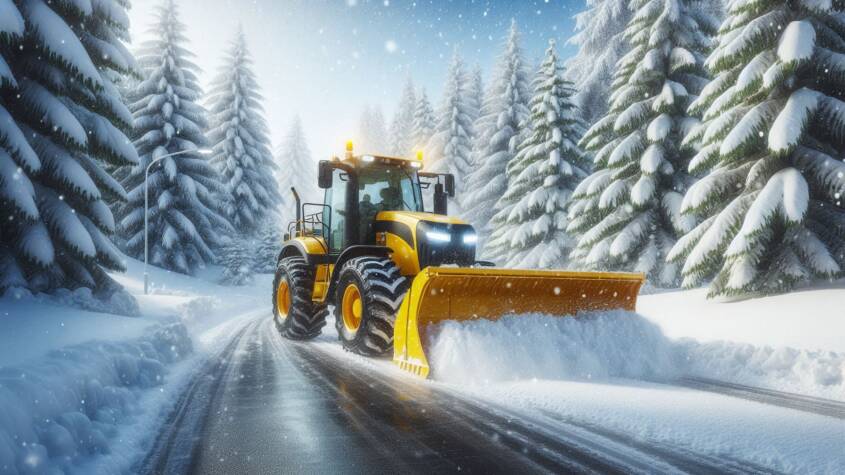
When winter blankets the landscape in thick layers of snow, many find themselves faced with the challenge of clearing their driveways and roadways. A snow removal tractor can be an invaluable asset in managing this task efficiently. These tractors offer powerful capabilities that make snow clearing faster and less labor-intensive, saving both time and effort.
Choosing the right snow removal tractor involves considering factors like size, horsepower, and attachments. Whether tackling a residential driveway or a large commercial lot, a suitable tractor can make all the difference. Armed with the right information, readers can make informed decisions about purchasing equipment or outsourcing snow removal tasks.
For those interested in maximizing their winter preparedness, understanding how these machines operate and their benefits is essential. Whether a seasoned contractor or a homeowner looking to invest, learning the intricacies of snow removal tractors can pave the way for a smoother winter experience.
Essentials of Snow Removal Tractor Operation
Effective operation of a snow removal tractor involves a solid understanding of its components, rigorous pre-operational checks, and precise operation procedures. Each of these aspects plays a vital role in ensuring efficiency and safety during snow removal activities.
Understanding the Components
A snow removal tractor consists of several key components. The tractor itself provides the necessary power and traction. The snow plow is attached at the front and is adjustable to manage various snow depths.
Key components include:
- Hydraulic system: Controls plow lifting and angling.
- Augers: For models designed for snow blowing or mixing with gravel.
- Tires and tracks: Ensure stability and traction on slippery surfaces.
Familiarity with these parts allows the operator to troubleshoot issues effectively.
Pre-Operational Checks
Before starting the snow removal tractor, several checks are crucial. Ensuring that the fuel tank is filled can prevent interruptions during snow removal. The operator should also inspect the fluid levels, including oil and coolant.
Other important checks include:
- Tire pressure: Should match manufacturer recommendations.
- Plow attachment: Verify it is secure and functioning.
- Lights and signals: Ensure they are operational for visibility.
Safety equipment, such as seat belts and mirrors, should also be checked.
Operation Procedures
Operating a snow removal tractor requires adherence to specific procedures for efficiency. The operator should start in a well-lit area and perform a safety briefing if others are nearby.
While driving, maintaining a steady speed is essential for effective snow removal. The plow should be adjusted according to the snow depth and surface condition.
Key operation steps include:
- Engaging the plow: Lower it before entering the snow area.
- Adjusting the angle: Change to optimize snow displacement.
- Monitoring surroundings: Look out for obstacles and pedestrians.
Proper training in these procedures enhances safety and effectiveness during snow removal tasks.
Maintenance and Safety
Proper maintenance and adherence to safety protocols are essential for the efficient operation of a snow removal tractor. Maintaining equipment not only enhances performance but also extends its lifespan, while safety guidelines ensure the operator remains protected during tasks.
Routine Maintenance Schedule
A regular maintenance schedule is critical. Operators should adhere to a timetable that includes:
- Daily Checks: Inspect fluid levels, tire pressure, and overall equipment condition before use.
- Weekly Maintenance: Clean the engine, inspect belts and hoses, and check for leaks.
- Monthly Inspections: Change the oil, replace filters, and align the blades to ensure optimal performance.
- Seasonal Tasks: Before the snowfall season, conduct a thorough check of all systems, including lights, brakes, and heating.
Keeping a log of these activities helps track maintenance and identify patterns that may require attention.
Troubleshooting Common Issues
Identifying and addressing common problems promptly can prevent operational delays. Some frequently encountered issues include:
- Starting Difficulties: Check the battery and connections. If the battery is weak, replace it.
- Hydraulic Failure: Inspect hoses and connections for leaks. Ensure that hydraulic fluid levels are adequate.
- Blades Not Engaging: Examine the drive mechanism and engage selectors. Replace faulty components as necessary.
Consulting the operator’s manual is advisable for precise troubleshooting steps, especially for specific models.
Safety Guidelines
Safety is paramount when operating snow removal tractors. Operators should follow these essential guidelines:
- Personal Protective Equipment (PPE): Always wear appropriate gear, including gloves, boots, and eye protection.
- Proper Training: Ensure operators are familiar with operating protocols and the equipment’s functions.
- Clear Surroundings: Before operation, ensure the work area is free from obstacles and bystanders.
- Emergency Preparedness: Have a first aid kit and fire extinguisher available and ensure all operators know how to access them.
By adhering to these safety measures, operators can significantly reduce the risk of accidents and injuries while maximizing efficiency.
Get an Affordable 5×10 Storage Unit to Suit Your Needs
A 5×10 storage unit offers a compact, cost-effective solution for storing various items. I…








